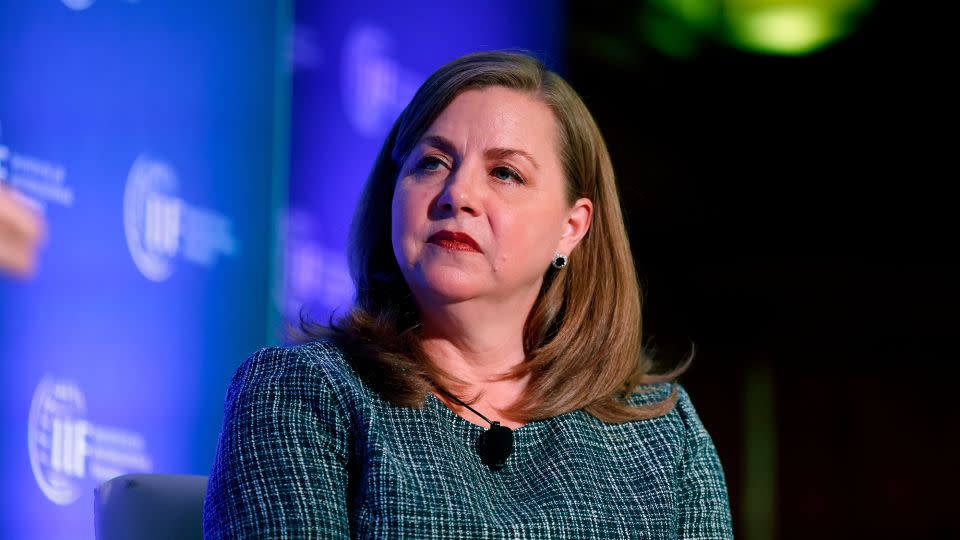Fed officials are talking down the chance of rate cut this year

At the beginning of the year, Federal Reserve officials projected they would cut interest rates three times this year. By June, they had lowered that projection to just one cut.
Now some key policymakers say it won’t happen at all.
On Tuesday morning, Fed governor Michelle Bowman said that she’s expecting no rate cuts this year.
“Inflation in the US remains elevated and I still see a number of upside inflation risks that affect my outlook,” Bowman said at an event hosted by the Policy Exchange think tank in London.
Supply chains have largely normalized, she said. The labor-force participation rate has leveled off after a post-Covid boom, and the US immigration policy rate may soon become more restrictive, limiting potential new labor market participants. None of these factors leave her confident that inflation rates will ease in the coming months.
Bowman, who is a voting member of the Federal Open Market Committee, also hinted that interest rates could go higher if inflation accelerates.
“I remain willing to raise the target range for the federal-funds rate at a future meeting should progress on inflation stall or even reverse,” she said. “Reducing our policy rate too soon or too quickly could result in a rebound in inflation, requiring further future policy rate increases to return inflation to 2% over the longer run.”
Investors weren’t happy to hear it. The Dow fell nearly 400 points Tuesday. (The broader S&P 500 was slightly higher, boosted by a comeback in Nvidia.)
Bowman joins a growing contingent of Fed officials who have hinted that rates will likely remain the same for the remainder of the year.
San Francisco Fed President Mary Daly. Also a voting member this year, said on Monday the Fed must be agile and “if inflation falls more slowly than expected, the policy rate must stay higher for longer.”
Speaking at the Commonwealth Club World Affairs of California in San Francisco, Daly said the economy remained strong and that she would not consider preemptively lowering interest rates before inflation comes down.
“I do think that preemptive cutting is something that you do when you see risks,” Daly said. “We’re going to be resolute until we finish the job. That’s why not taking preemptive action when it’s not necessary is so important.”
Chicago Fed President Austan Goolsbee has also been particularly hawkish in his views. Goolsbee said on Monday that he would need to see “more months’ of strong inflation data to even begin to consider cutting rates.
Minneapolis Fed President Neel Kashkari, who is not voting this year, has floated the possibility of not cutting rates at all this year multiple times over the past few months. He also said rate hikes are “certainly not off the table.”
Like Bowman and Kashkari, New York Fed President John Williams said rate hikes aren’t part of his baseline outlook. But he said he’s not even remotely considering a rate increase at the moment.
Policymakers forecast earlier this month that inflation will be more stubborn this year than they had previously thought and held interest rates at a 23-year high, where they have sat for nearly a year.
The latest read on inflation will come Friday when the Commerce Department releases the Personal Consumption Expenditures price index data for May. The PCE index, which measured 2.7% in April, is the Fed’s preferred inflation gauge.
For more CNN news and newsletters create an account at CNN.com

 Yahoo Finance
Yahoo Finance 